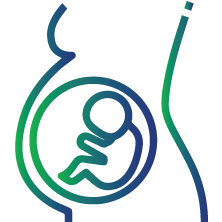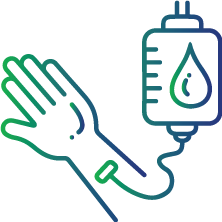
Hepatitis B Surface Antigen (HBsAg), Rapid Method Test
Hepatitis B Surface Antigen (HBsAg), Rapid Method
The HBsAg rapid test is a qualitative analysis to detect hepatitis B antigen in the blood. It is useful in finding out if you had a recent or long-standing infection caused due to hepatitis B virus (HBV). This in vitro immunoassay is easy to perform and gives quick results.
Hepatitis B is an inflammation of the liver that occurs due to an infection caused by HBV. HBV is one of 5 hepatitis viruses. This virus is spread through contact with body fluids such as blood, seminal fluid, and vaginal secretions.
Hepatitis B Surface Antigen test is also known as Anti-HBs, Anti-HBc, HBsAg, HBeAg, HBV Tests, Hep B Test, Hepatitis B e Antigen, Hepatitis B Surface Antigen, IgM anti-HBe
Symptoms of Hepatitis B infection

Nausea

Loss of appetite

3.Muscle aches

Fever

Yellowing of skin and eyes (Jaundice)

Dark-colored urine

Abdominal pain

Confusion (in extreme cases)
Who should get tested?
You should get tested for HBsAg if you are exposed to the hepatitis virus in either one of the following ways mentioned below

Having sex with an infected person

Living in close proximity with an infected person

Being male and having sex with same gender

Being a child born to an infected mother

Sharing needles for intravenous drug use

Undergoing a blood transfusion or organ transplant
Test preparation:
The HBsAg rapid test is a one-step test that requires a blood sample. The blood is drawn from a vein in the arm and detects the presence of HBsAg
Interpretation of results
The HBsAg rapid test may come out as positive, negative, or invalid.
Positive result
A positive (reactive) test appears in the form of two-colored lines; one line in the test area (P=positive), and one in the control area (C=control). Even a faint line in the test area is indicative of a reactive test result.
Negative result
A negative (non-reactive) test shows only one colored line in the control area.
Invalid result
If the control line is also not visible, the test result is considered to be invalid.
NOTE: This test is only a qualitative screening assay, and it does not rule out Hepatitis B infection as HBsAg may not be present in sufficient quantity to be detected during the early stages of infection
FAQs
How is the antigen detected using the hepatitis B surface antigen, rapid test?
This test requires a blood sample, and if HBsAg is present in the sample, it forms a complex with the anti-HBsAg conjugate that is present in dried form on the test strip. The blood passes down through the nitrocellulose membrane and binds to a second anti-HBsAg antibody that is present in an immobilized form on the membrane. As a result, a red line forms on the test strip, indicating the presence of the antigen
What are the risks involved in HBsAg, Rapid test?
This test involves negligible risk. As this test involves pricking the arm with a needle, some people may feel a slight sting or pain following the prick which subsides with time
Does the hepatitis B surface antigen, rapid method require any precautions?
No, there are no precautions that need to be taken before undergoing this test. However, your health care provider should be informed about all the medications, herbs, supplements, and vitamins that you may be taking prior to this test
What does a positive result indicate for HBsAg Rapid test?
If your test result shows a positive result, it may mean that you are actively infected with the hepatitis B virus (HBV). A positive result may also indicate that you have a chronic hepatitis B infection. If the recovery takes more than 6 months, the virus will continue to remain in the bloodstream and cause liver problems. Also, there are high chances that you may pass on the infection to others
What is the turn around time (TAT) for HBsAg Rapid test?
The results of HBsAg Rapid test are usually available within the same day the test is done. However, it could take longer at times

